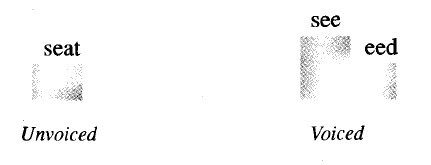Use staircase intonation.
Let those sound groups floating on the wavy river in the figure flow downhill and you'll get the staircase. Staircase intonation not only gives you that American sound, it also makes you sound much more confident. Not every American uses the downward staircase. A certain segment of the population uses rising staircases—generally, teenagers on their way to a shopping mall: "Hi, my name is Tiffany. I live in La Canada. I'm on the pep squad."
What Exactly Is Staircase Intonation?
In saying your words, imagine that they come out as if they were bounding lightly down a flight of stairs. Every so often, one jumps up to another level, and then starts down again. Americans tend to stretch out their sounds longer than you may think is natural. So to lengthen your vowel sounds, put them on two stairsteps instead of just one. 
The sound of an American speaking a foreign language is very distinctive, because we double sounds that should be single. For example, in Japanese or Spanish, the word no is, to our ear, clipped or abbreviated.
When you have a word ending in an unvoiced consonant—one that you "whisper" (t, k, s, x, f, sh)—you will notice that the preceding vowel is said quite quickly, and on a single stairstep. When a word ends in a vowel or a voiced consonant—one that you "say" (b, d, g, z, v, zh, j), the preceding vowel is said more slowly, and on a double stairstep. 
There are two main consequences of not doubling the second category of words: Either your listener will hear the wrong word, or even worse, you will always sound upset.
Consider that the words curt, short, terse, abrupt, and clipped all literally mean short. When applied to a person or to language, they take on the meaning of upset or rude. For example, in the expressions "His curt reply ...," "Her terse response...'' or "He was very short with me" all indicate a less than sunny situation.
















